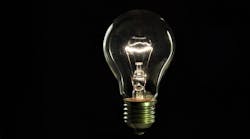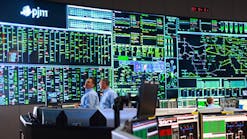Remember the frenzy surrounding the announcement that the most commonly used light bulbs in the country, the 40- and 60-watt incandescent bulbs, would be banned? One media outlet even wrote an obituary for the occasion. So was the plan to ban all incandescent bulbs? And why was the focus on the lowly light bulb in the first place? Finally, why can we still buy incandescent bulbs?
In 2007, the Congress passed the Energy Independence and Security Act (EISA), making it mandatory for the DOE to develop technology-neutral standards requiring higher-efficiency residential lighting options for the United States. The resulting regulations affected bulbs producing 310 lumens to 2600 lumens, with exclusions for speciality bulbs, such as appliance lamps, candelabra lights under 60 watts, 3-way bulbs and colored lamps. The law required manufacturers to cease production of successively lower wattage traditional incandescent bulbs that could not meet new efficiency requirements. A second tier of restrictions scheduled to become effective in 2020 would require all general-purpose bulbs to be 60-70% more efficient than traditional incandescent bulbs.
Bulbs affected by the first round of restrictions were replaced with compact fluorescent lights (CFLs), and light emitting diodes (LEDs), neither of which was too popular at the time. Energy-efficient incandescent bulbs, such as glass halogen bulbs capable of reducing energy usage by at least 27% over traditional incandescent bulbs, were also permitted as replacement options. That answers two of the above questions. The law does not ban the manufacture of incandescent bulbs if they can meet the latest efficiency standards and that is why we can still buy them. But why the focus on the lowly light bulb in the first place? Looking just at residential electricity usage, lighting accounts for about 91 billion kWh per year. The U.S. Congress recognized that increasing lighting efficiency even incrementally could result in huge savings, affecting a staggering 6 billion screw-in light sockets. Energy-efficient incandescent bulbs save about 25% over traditional incandescents and the savings can be as high as 75-80% with CFL and LED bulb options.
It has been 12 years since the passage of the EISA and we have seen tremendous gains in overall residential lighting efficiency. However, additional steps contemplated by the law are still in play and remain controversial. In September, a new rule that eliminates previously adopted changes to the definition of General Service Lamps (GSLs) and General Service Incandescent Lamps (GSILs) became law. This action maintains the exemption for certain bulbs from the revised efficiency requirements. In addition, the DOE determined that its actions in this rulemaking do not trigger a backstop provision in the law that would have required all GSIL bulbs to meet a 45-lm/w efficiency requirement by January 1, 2020.
Some observers suggest that the DOE’s actions in this rulemaking represent a reversal of previously approved efficiency standards. That is not technically true. The corrected rule simply maintains the scope of the original statute. The DOE’s statement to critics is that homeowners and other users can still choose to use more efficient lights for speciality applications but it will be up to them. The DOE was charged by the Congress to review the efficiency standards for GSILs in another proposed rule. The DOE’s determination on this score is that further changes to the energy conservation standards for GSILs are not presently economically justifiable, but the agency is asking for public input on this decision. The result of DOE’s action, if unchanged, will be the continued manufacture of energy-efficient halogen incandescent light bulbs past 2020.
Environmental groups contend that they will likely contest the DOE’s recent rulings. They argue that any exclusions from the higher-efficiency standards and failure to implement the 45-lm/w minimum standard contemplated by the law will increase electric costs for customers and increase pollution. However, data provided by the National Electrical Manufacturer’s Association (NEMA) show that the GSL products already in the market provide an average efficacy greater than 45 lm/w and consumers are transitioning to LED options regardless of government regulation. Further, major light manufacturers believe the future is in LEDs but most do not support mandates.
Residential lighting standards will undergo further review when the DOE considers potential revisions to the standards for GSLs. The DOE’s stated goal for all related proceedings is to adhere to a process that promotes customer choice, encourages technological innovation and provides certainty for stakeholders. Despite some earlier news stories, the iconic incandescent light bulb is not dead and the swift demise that some hoped for it seems unlikely. Rather, it may drift gently into oblivion as consumers make intelligent choices in the marketplace.


